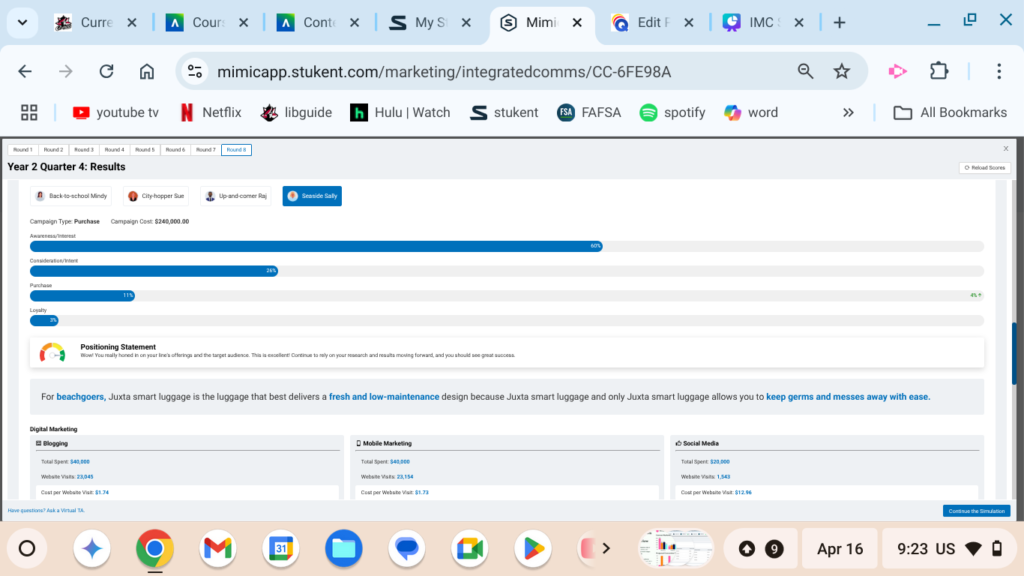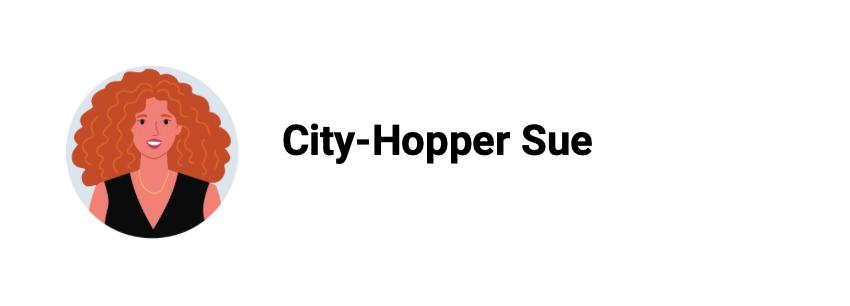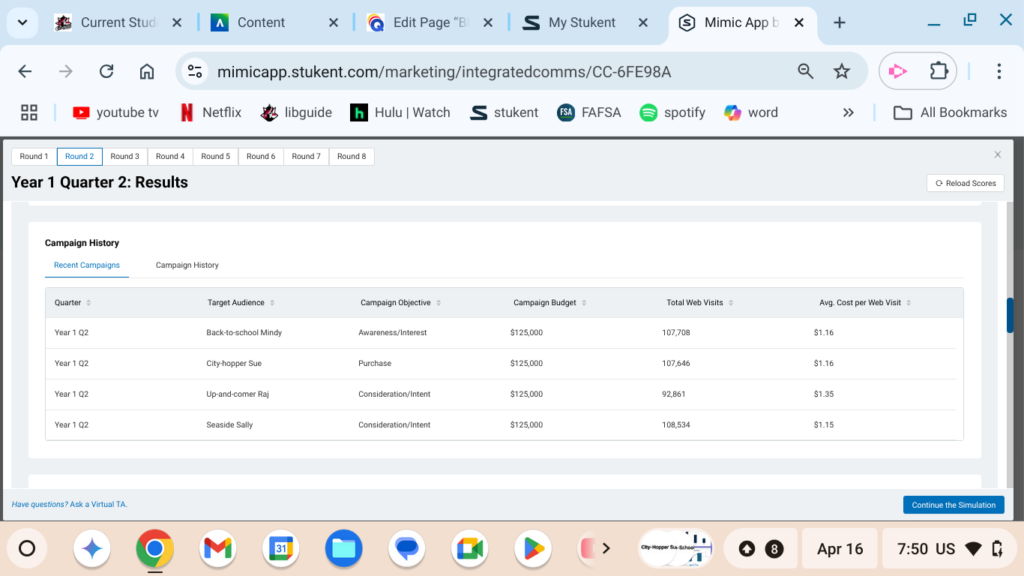Blog
Integrated Marketing Campaign Project Introduction
In my Integrated Marketing Campaign class at Western Technical College, we underwent a simulation during the seven weeks of class. In this simulation, we explored marketing channels, ROI growth, and campaign metrics. As marketing managers for the company “Buhi,” we created campaigns to market their suitcases for specific audiences. We were given a $500,000 budget to spend across all audiences with any marketing channel. It was on our advantage to utilize that budget to earn a projected revenue of $45,700,000. All of the audiences were marketed differently in terms of each campaign (see gallery below for profiles of target audiences).
Overall Campaign Strategy & Performance
In Year 1 of my campaign, I mainly focused on utilizing my $500,000 budget and giving all target audiences a specific amount (see first screenshot below). Obviously this wasn’t the smartest idea considering each audience is going to respond to all marketing channels differently. Towards Year 2, I readjusted my marketing channels with the audiences by tailoring their interests and stages they were in for better results (see 2nd screenshot below).
Target Audience & Positioning
In this simulation, I tended to focus more on Raj and Sue since their profiles were specific towards traveling, and those are the descriptions I went after when marketing suitcases for Buhi. I saw that this wasn’t the case however, since each audience had their own marketing funnel stage in where they had a better opportunity of performance. In the first, you can be aware of Raj’s positioning statements and how they didn’t progress as well as Sally’s may have. As an example in the second screenshot below, you can notice Sally’s positioning statement and the status there in which earned me green towards finding her niche campaign and marketing objectives. In this, I could have improved my results better if I had looked more into the marketing funnels beginning in Year 1 campaigns. Through the funnel, I often navigated my messaging by simple towards marketing each audience the same campaign amount. Towards the end, I focused on a straighter CTA with purchase and loyalty statuses within specific target audiences.


Marketing Communications
The ideal marketing communications mix is something to consider when working for a company as their marketing manager. At the bottom, you can see a chart that explains the stages and their options within marketing. In terms of the funnel, throughout the awareness and interest stages, I focused on blogging, social media, direct mail, community relations, etc. In the consideration and intent stage in Year 1, I focused a lot on airports and transportation marketing communications and found that these did not perform that well. Towards Year 2, I switched towards videos, direct mail, and magazines. In the purchase stage, I did eBooks, SMS texts, mobile marketing, direct mail, and display ads. I did not market in the loyalty stage because my percentages were not high enough to gain interests on my target audiences. I noticed I saw better results when I chose to market the awareness and interest stages, but that’s common since this stage is the most popular among all audiences.

Budgeting and ROI
I allocated my budgeting in this simulation by using all of my $500,000 on all target audiences. Down below in the first graph, you can see my best performing marketing channels; mobile marketing being the highest, blogs being the second highest, and eBooks being the third highest. This also represents the total website visits that each marketing channel calculated in terms of budgeting aspects. In the second graph, you can see my ROI within Year 1 and Year 2 and how much it increased. The revenue for Year 1 was $16,813,250. My total revenue towards the end of Year 2 ended up being $35,561,296 which fell about $10 million short for the expected revenue Buhi wanted to reach.

Performance Metrics & Optimization
Towards the end of Year 2, I understood my performance metrics better by monitoring my ROI, my CPC, and total website visits with all marketing channels and their audiences. For CPC, I noticed the costs per click per say and how much money was being generated off of each marketing channels with each target audience in the mix. I used those insights when it came towards maximizing my $500,000 budget within each quarter. When I focused on using those insights, it helped me understand how much money to put within a specific audience and their campaign.
Reflection
I’m appreciative of the opportunity I got to learn about budgeting and specific campaign objectives. If I could reconsider my decisions for a third year, I would put more studying into the resources that Buhi gave me. I do believe I overlooked this area and think I could have improved my strategies from there. If I had done more research, I do think I could have reached the expected revenue of $45 million for Buhi. I fell about $10 million short, but it made me realize the importance of campaign budgeting and using CPCs to my advantage. This also showed me how to study how specific marketing channels are performing within each target audience. However, I’ve grateful for this opportunity that Buhi gave me to explore my strengths and weaknesses as a “marketing manager” for their company.





